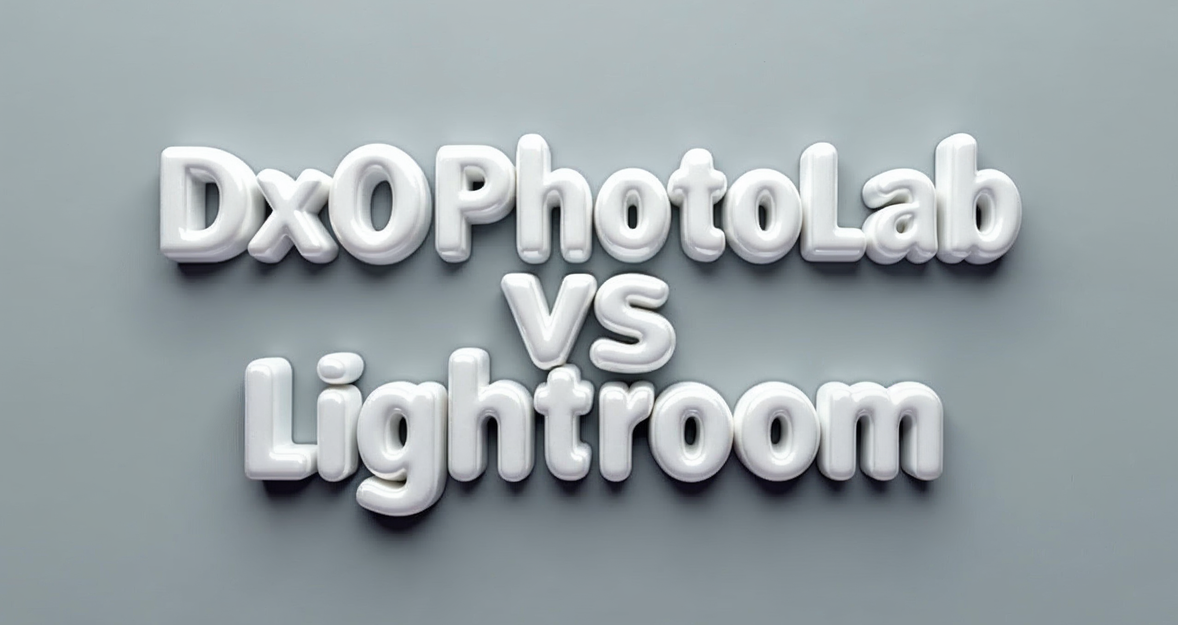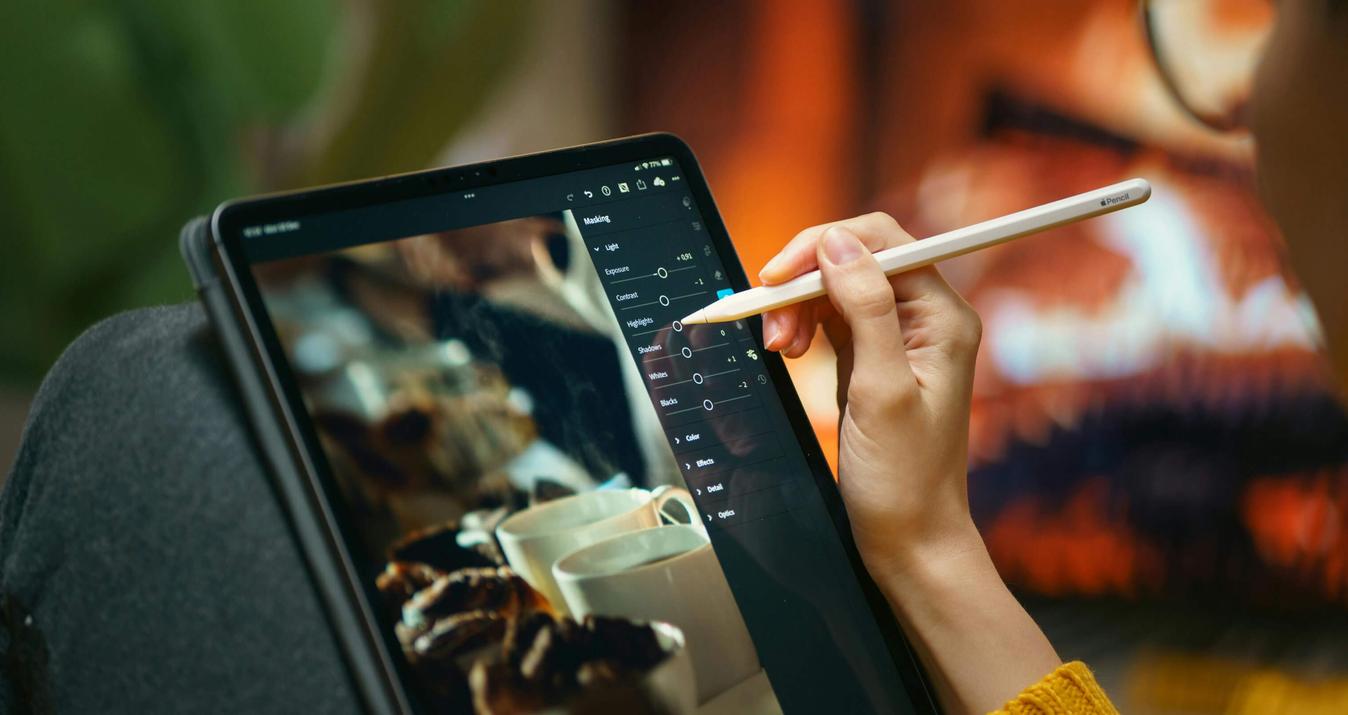Photographers' Guide To Dxo Photolab Vs Lightroom
July 30, 2025

DxO PhotoLab vs Lightroom—two giants, one choice. Which photo editor actually fits your workflow?
If you’re a photographer—beginner or pro—you’ve probably heard of DxO PhotoLab and Adobe Lightroom. Both are popular photo editing tools. Both promise pro-level results. And both have strong followings. But which one actually fits your workflow better?
This article breaks it down in a way that’s simple, specific, and human. No fluff. Just the facts that matter when you’re editing portraits, landscapes, or running client shoots. Let’s get into the real comparison of DxO vs Lightroom, without the tech jargon overload.
What Are DxO PhotoLab and Lightroom?
 DxO PhotoLab is a raw photo editor that leans heavily on AI-powered automatic corrections. It’s developed by a French company known for lens and sensor testing. Their deep knowledge of optics plays a big role in how their software works.
DxO PhotoLab is a raw photo editor that leans heavily on AI-powered automatic corrections. It’s developed by a French company known for lens and sensor testing. Their deep knowledge of optics plays a big role in how their software works.
Lightroom, on the other hand, is part of Adobe’s Creative Cloud suite. Photographers of all skill levels widely use it and integrates smoothly with Photoshop.
Both tools handle RAW files, have non-destructive editing, and support presets and local adjustments. But the way they do things? Quite different. And that difference affects your final images—and your editing speed.
Your AI-Powered Photo Editor for MacOS and Windows
Discover Now!User Interface: Which One Feels Better?
 Let’s talk about how these tools actually feel to use.
Let’s talk about how these tools actually feel to use.
DxO PhotoLab: Clean but Different
 DxO’s interface is clean but takes some getting used to if you’re coming from Lightroom. The workspace is split into “PhotoLibrary” and “Customize.” This separation helps keep things focused—but it also means an extra click when you’re switching tasks.
DxO’s interface is clean but takes some getting used to if you’re coming from Lightroom. The workspace is split into “PhotoLibrary” and “Customize.” This separation helps keep things focused—but it also means an extra click when you’re switching tasks.
It’s minimal but not necessarily intuitive at first. However, once you get used to it, it flows nicely. Especially if you rely on automatic lens and camera corrections, which the PhotoLab platform loads almost instantly when you import.
Lightroom: Familiar and Integrated
 Lightroom has that classic Adobe feel. Everything’s laid out in panels—Library, Develop, Map, Print, and so on. You can hide and rearrange panels, too, which helps tailor the interface to your needs. If you’re already using Adobe apps, it’ll feel like home. It also wins in terms of cloud integration and organization tools.
Lightroom has that classic Adobe feel. Everything’s laid out in panels—Library, Develop, Map, Print, and so on. You can hide and rearrange panels, too, which helps tailor the interface to your needs. If you’re already using Adobe apps, it’ll feel like home. It also wins in terms of cloud integration and organization tools.
So, when it comes to comfort, this software might feel more familiar, while DxO takes a little warming up. But once you’ve got the hang of PhotoLab’s layout, it becomes second nature.
Editing Capabilities: What You Can Actually Do
 Both platforms offer powerful editing tools, but they focus on different strengths.
Both platforms offer powerful editing tools, but they focus on different strengths.
DxO: Smart Auto Corrections and Deep Detail
Here’s where DxO stands out.
DeepPRIME and DeepPRIME XD noise reduction is incredible. You’ll see cleaner images even at high ISO.
The automatic optical corrections (like distortion, vignetting, and chromatic aberration) are arguably better than Lightroom.
DxO Smart Lighting balances exposure across difficult lighting situations.
Local adjustments are available, including control points (from Nik Collection heritage), but they feel a bit more “manual” than Lightroom’s AI selections.
This tool also handles RAW files with its own engine, which some users say leads to better base quality. If you shoot in tough lighting conditions or on older gear, you’ll likely see improvements right away.
Lightroom: Versatility and Presets Galore
Lightroom wins in workflow flexibility:
Easy syncing across devices.
Strong integration with Photoshop.
Tons of presets, both built-in and downloadable.
Better cataloging tools, keywords, and metadata handling.
AI-based masking that can automatically detect sky, subject, background, and more.
It’s more of an all-in-one platform for organizing, editing, and exporting your work. If your goal is speed and mobility, this one wins. But if image quality and optical correction are your priority, DxO shines.
Performance: Speed and Stability
 Speed matters. Nobody wants to wait for a slider move to take effect or deal with lag.
Speed matters. Nobody wants to wait for a slider move to take effect or deal with lag.
DxO: Hardware-Heavy but Powerful
DxO’s DeepPRIME tools are GPU-intensive. On older systems, they’ll slow you down. But with the right hardware, batch processing is smooth and fast. Rendering previews takes time, but what about the export quality? Top notch. If you work on hundreds of RAW files per week, the output quality is worth the wait.
Lightroom: Cloud-Connected but Slower Imports
Lightroom tends to slow down as your catalog grows. Importing thousands of RAWs isn’t lightning fast. But if you keep your catalog organized and use Smart Previews, performance improves. However, real-time editing feels slightly snappier compared to DxO on average machines. So, DxO is faster for final exports and noise reduction. Lightroom is more consistent for everyday editing.
Pricing: Subscription vs One-Time Payment
Let’s talk about the money.
DxO PhotoLab is available as a one-time purchase. No subscription. You buy it, you own it.
Lightroom is only available through an Adobe subscription, bundled with Photoshop and cloud storage.
If you’re trying to move away from monthly fees, DxO offers better long-term value. That’s why many photographers search for a free alternative to Lightroom before committing to Adobe’s subscription model.
AI and Automation: Who’s Smarter?
 This is where things get interesting.
This is where things get interesting.
DxO: Smart AI That Actually Helps
DxO’s AI photo correction tools are tuned using thousands of lens and camera profiles. It’s not just a gimmick—it genuinely improves sharpness, color, and noise. Great for those who shoot events, travel, or wildlife where quick adjustments are needed. The AI doesn’t guess—it’s based on measured optical data. It’s also a solid AI photo editor landscape users love, because of how it balances skies, shadows, and detail in outdoor shots.
Lightroom: AI Masking and Adaptive Presets
Lightroom’s newer AI-powered masking tools are very impressive. You can now target the sky, subject, or background with just one click. This speeds up retouching work, especially for portraits and commercial shoots. They’ve also introduced adaptive presets that change based on the photo content, saving tons of time when batch editing.
In short, both are smart, but DxO is stronger in auto-correction, while Lightroom is better at AI-based selection and masking.
Mobile and Cloud Use: Go Anywhere?
 If you edit on the go, here’s what to know:
If you edit on the go, here’s what to know:
Lightroom has a mobile app and full cloud support. You can shoot, edit, and post from your phone or tablet.
DxO PhotoLab is desktop only. No cloud syncing, no mobile version.
That’s a major factor if you’re often on the move or work between multiple devices. Lightroom’s mobile app is full-featured and intuitive. Some users who want cross-device functionality explore apps like Luminar Neo, which blend powerful editing with intuitive interfaces.
Presets and Workflow Tools
 Both apps offer preset systems, but Lightroom’s community is more active.
Both apps offer preset systems, but Lightroom’s community is more active.
Lightroom has hundreds of free and paid presets available online.
DxO also has presets, including creative looks and film emulations, but fewer options.
DxO’s FilmPack extension adds vintage film presets that are quite detailed and authentic.
If you’re new to editing and want fewer distractions, something like a simple image editor may be a better starting point than jumping into either. Still, both tools support custom presets, which is helpful for keeping your style consistent across multiple projects.
Exporting and Final Output
 After all that editing, your export matters.
After all that editing, your export matters.
DxO gives you extremely sharp, clean exports, especially when DeepPRIME is used.
Lightroom gives you flexibility—multiple export settings, watermarks, direct export to web galleries, and social platforms.
DxO’s output is often praised in DxO reviews, especially among photographers shooting night events, concerts, or sports. The difference is visible, especially at higher ISO settings. If your main concern is retaining maximum detail and reducing noise, DxO has the edge. Lightroom, though, makes exporting to clients or social media platforms faster and easier.
How Does It Compare to Other Tools?
 This debate isn’t just DxO vs Lightroom—other players are in the game too. For example, many photographers ask about Capture 1 vs Lightroom. Capture One is excellent for tethered shooting, color grading, and commercial studio work.
This debate isn’t just DxO vs Lightroom—other players are in the game too. For example, many photographers ask about Capture 1 vs Lightroom. Capture One is excellent for tethered shooting, color grading, and commercial studio work.
Others look at tools like ON1 Photo RAW, Affinity Photo, or even Luminar Neo. Each has its strengths. Still, DxO and Lightroom remain two of the most balanced options for most general photography needs.
Exclusive Tools of Endless Possibilities in One AI Editor
Explore Now!Final Verdict: Which Should You Choose?
 Let’s wrap this up.
Let’s wrap this up.
Choose DxO PhotoLab if:
You want outstanding image quality and noise reduction.
You prefer one-time purchases.
You shoot RAW and want powerful auto-corrections.
You focus more on image quality than on mobile/cloud workflow.
Choose Lightroom if:
You want mobile editing and cloud access.
You rely on presets and integration with Photoshop.
You need better cataloging and metadata management.
You want to share and collaborate quickly from anywhere.
In the end, the best choice depends on your style and workflow. Some photographers even use both: DxO for RAW processing and Lightroom for organization and finishing touches. There’s no one-size-fits-all. Just the tool that helps you bring your vision to life.





